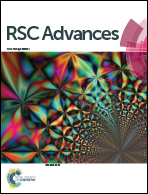Nano-particle transport and the prediction of a valid area to be trapped based on a plasmonic antenna array
Abstract
Optical antennas are promising for optical trapping and particle manipulation, when converting light between localized energy and freely propagating radiation. In this paper, we proposed a numerical method for the transport of nanoparticles using the optical force field over a plasmonic Au antenna array. The plasmonic Au antenna array is designed to produce strong near-field hot spots when illuminated by a plane wave. The hot spots function as optical traps, separately addressable by their resonant wavelengths. By changing the traps sequentially, the nanoparticles can be handed off between adjacent traps. We also demonstrated a valid area in which the nanoparticles could be trapped and transferred stably by discussing the trapping potential that particles encountered. The simulated and calculated results showed that this method had promising applications in the field of biochemical diagnoses and high-accuracy optical manipulation.



 Please wait while we load your content...
Please wait while we load your content...